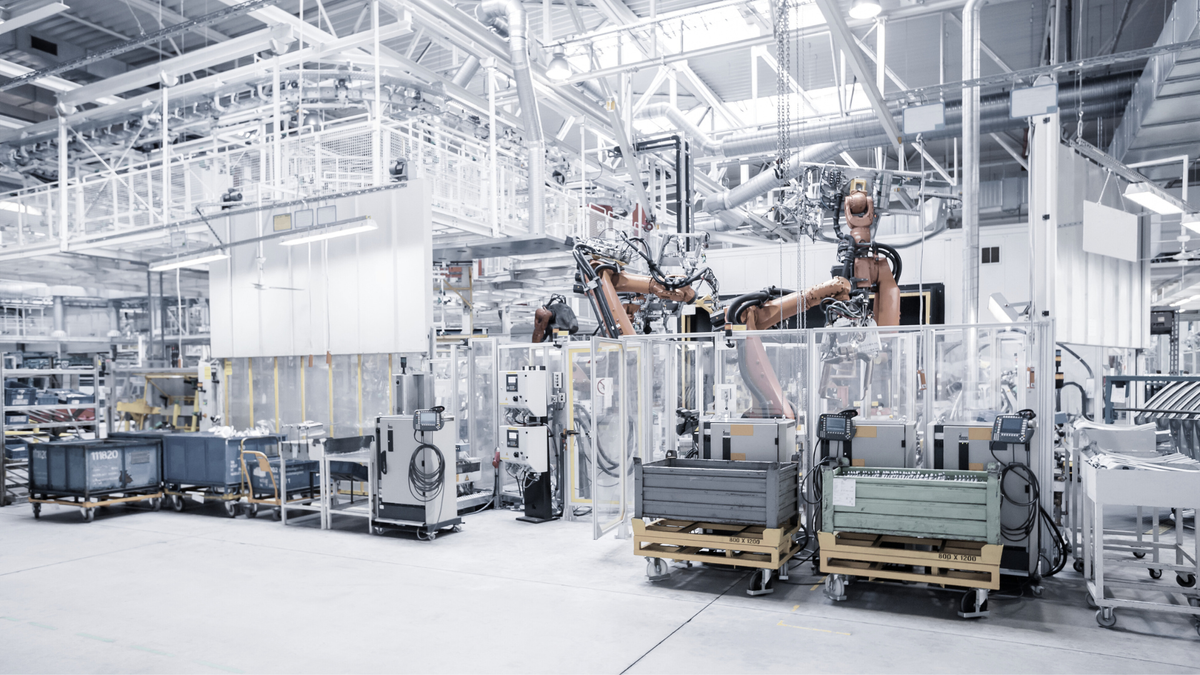Optimizing Manufacturing: The Synergy of Lean Thinking and Simulation in Production Efficiency
The manufacturing industry is constantly striving for efficiency, quality, and speed. At Simatron, we have seen the benefits of combining lean thinking with advanced simulation tools like FlexSim.

The manufacturing industry is constantly striving for efficiency, quality, and speed. At Simatron, we have seen the benefits of combining lean thinking with advanced simulation tools like FlexSim. This integration streamlines production processes and encourages continuous improvement and innovation. This article will explore how these two approaches can work together to revolutionize the manufacturing industry.
Lean thinking is a management philosophy focusing on eliminating waste and improving processes to create more value with fewer resources. It originated from the principles of lean manufacturing. By adopting this approach, manufacturing processes can be optimized, and the overall efficiency of the production line can be enhanced.
Understanding Lean Thinking in Manufacturing
Lean thinking is a highly effective management philosophy that originated from the Toyota Production System. The primary goal of lean thinking is to minimize waste, while ensuring that productivity is not affected. This philosophy involves identifying inefficiencies in processes and eliminating them to improve flow. Furthermore, it fosters a culture of continuous improvement, where every member of the team is encouraged to strive for perfection. The five key principles of lean thinking are the foundation of this philosophy, and they include:
- Value Identification: Recognizing what the customer values.
- Value Stream Mapping: Analyzing the flow of materials and information.
- Creating Flow: Ensuring smooth, uninterrupted production.
- Establishing Pull: Responding to customer demand.
- Pursuit of Perfection: Continual improvement.

The Role of Simulation in Manufacturing
FlexSim is the main simulation software used by our team. It is a robust computer simulation tool that provides a 3D modeling platform to simulate, analyze, and visualize industrial systems. The software allows engineers to create a virtual model of their manufacturing systems, including logistics, workforce, machinery, and material flow. Simulation with FlexSim is instrumental in:
- Predicting System Behavior: Understanding how changes affect the system before implementation.
- Resource Optimization: Efficient allocation of resources to meet production targets.
- Bottleneck Analysis: Identifying and addressing workflow interruptions.
- Process Verification: Ensuring that proposed changes lead to the desired outcome.
Integration of Lean Thinking and Simulation
Combining lean thinking and simulation results in a powerful and dynamic integration that can significantly improve manufacturing operations. By leveraging the strengths of both approaches, this synergy can help identify inefficiencies, streamline processes, and optimize resource allocation, ultimately leading to increased productivity, cost savings, and improved overall performance. Let’s explore this integration:
- Visualizing Value Streams: Simulation aids in creating a virtual model of the value stream, making it easier to identify waste and inefficiencies. This visual representation supports Lean’s value stream mapping, offering a clearer understanding of the current state and facilitating the design of a more efficient future state.
- Simulating Lean Solutions: Simulation allows for the simulation of lean strategies before implementation. This helps validate lean concepts like 'Just-In-Time' production or 'Kanban' systems, ensuring they are feasible and beneficial before actual deployment.
- Continuous Improvement through Data: Simulation provides detailed data and analytics, aiding in the lean principle of continuous improvement. Manufacturers can make informed decisions on further reducing waste and optimizing processes by analyzing simulation results.
- Training and Experimentation: With simulation, teams can experiment with lean principles in a risk-free environment. This serves as an excellent training tool for employees to understand lean concepts and see the impact of their actions on overall efficiency.
- Customization and Flexibility: FlexSim's customizable nature allows it to be tailored to specific manufacturing needs, aligning perfectly with the lean principle of addressing unique customer values and demands.
The Competitive Edge
In today's competitive market, the integration of lean thinking and simulation provides a significant edge. It enables companies to be more agile, responsive to customer needs, and efficient in their operations. The ability to simulate and optimize processes before implementing them reduces risks and costs associated with trial-and-error methods.
Conclusion
The combination of lean thinking and simulation is powerful, offering a path to operational excellence in manufacturing. It's not just about reducing waste or increasing efficiency; it’s about building a culture of continuous improvement and innovation. As we move forward in this era of rapid technological advancement, the integration of these two methodologies will be crucial for businesses seeking long-term success and sustainability
If you found this article interesting and useful, subscribe to learn more about our situational problem-solving and simulation services.




